Fortnight Lily Plant
- March 13, 2024
- 0 comment
The Fortnight Lily, also known as Dietes Iridioides, is a plant that comes back year after year. It’s loved for its beautiful flowers and how simple it is to take care of. This plant is originally from South Africa and is grown in many places because it looks so pretty in gardens.
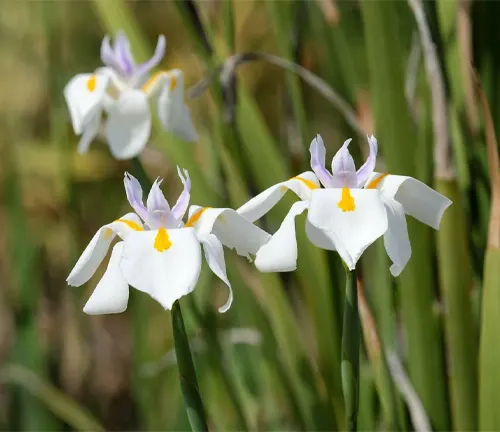
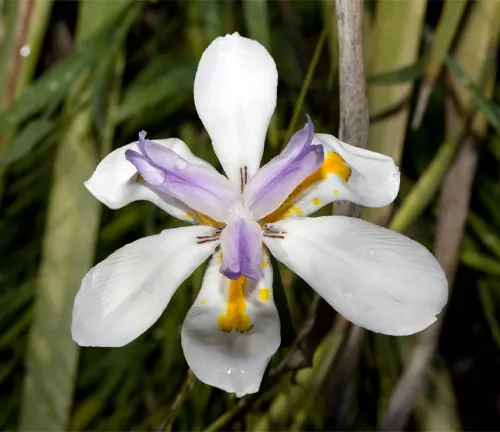
It belongs to the Iridaceae family, which includes other plants like irises. If you want a low-maintenance plant that adds beauty to your garden, the Fortnight Lily could be a great choice!
| Characteristics | Description |
| Scientific Name | Dietes iridioides |
| Common Names | Fortnight Lily, African Iris, Morea Iris |
| Family | Iridaceae |
| Native Region | South Africa |
| Plant Type | Perennial |
| Size | Grows up to 2-4 feet tall and 2-3 feet wide |
| Leaves | Sword-shaped, evergreen, and arranged in fan-like clusters |
| Flowers | White, yellow, or blue iris-like flowers with attractive markings |
| Propagation | Fortnight Lily plants can be propagated through the division of rhizomes or from seeds. They are relatively easy to propagate and establish, making them a popular choice for gardeners. |
| Drought Tolerance | This plant is known for its exceptional drought tolerance, making it suitable for xeriscaping and water-wise gardening. |
| Cultural Uses | In its native region, the Fortnight Lily has cultural significance and is often used in traditional medicine and rituals. |
| Ecological Role | In its natural habitat, the Fortnight Lily plays a role in providing habitat and food for local wildlife, including birds and insects. |
| Notable Species | While Dietes iridioides is the most commonly cultivated species, other notable species in the Dietes genus include Dietes grandiflora and Dietes bicolor. |
| Hardiness Zones | 8-11 |
| Growth Rate | Moderate |
| Lifespan | Can live for several years with proper care |
Botanical Beauty of “Fortnight Lily Plant”
The Fortnight Lily Plant is a stunning beauty in the botanical world, with its graceful flowers adding splashes of white, yellow, and violet to any garden. Its green leaves stay vibrant all year round, creating a rich background that enhances the overall look of a garden. This plant is a popular choice for gardens aiming to combine different textures and colors to create a visually appealing landscape.
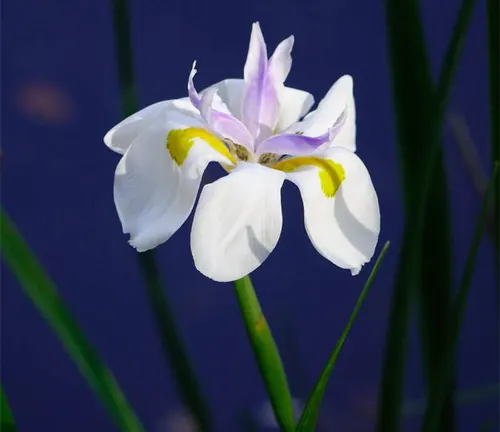
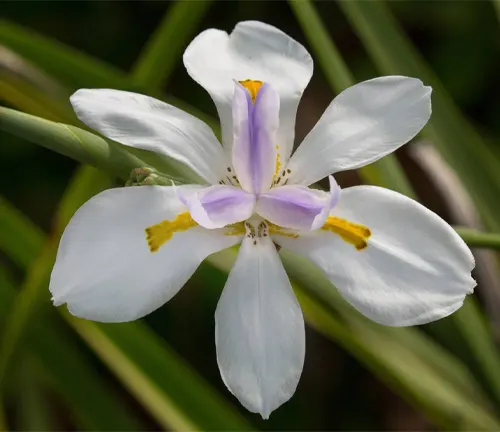
Woodland Elegance
The Fortnight Lily brings a touch of elegance to woodland gardens, borders, and pots with its graceful leaves and beautiful flowers. It enhances the beauty of these spaces with its charming presence, making it a perfect choice for adding a sophisticated touch to your outdoor areas.
Ecological Importance
The Fortnight Lily not only adds beauty to gardens, but it also plays an important role in the environment. It attracts pollinators like bees and butterflies, which are essential for the reproduction of many plants. Additionally, its foliage provides shelter for small animals, contributing to the overall ecological diversity of the area. This plant is not just a pretty addition to your garden, but also helps support the natural ecosystem.
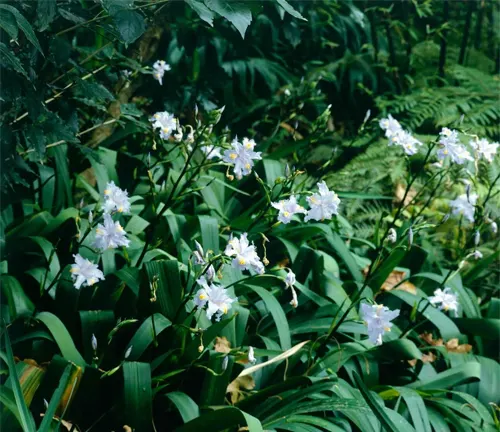
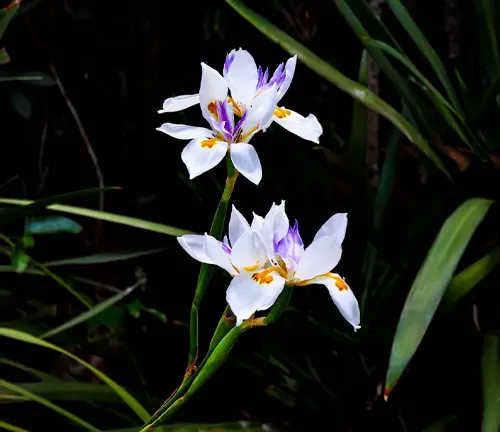
Cultivation and Conservation
The Fortnight Lily is a tough plant that can grow in many different conditions, making it great for projects that aim to keep soil in place and prevent erosion. It’s often used in landscaping for these reasons. Protecting the places where it naturally grows is really important to make sure we keep all the different types of Fortnight Lilies healthy and strong. Conservation efforts help preserve the genetic variety of this plant, which is vital for its long-term survival.
Fragrance
Although the Fortnight Lily is not famous for having a powerful smell, its gentle fragrance brings a subtle charm to gardens and outdoor areas. The delicate scent of the Fortnight Lily may not be overpowering, but it adds a pleasant touch to the surroundings, especially during the blooming season.
This subtle fragrance can enhance the overall ambiance of a garden, creating a more enjoyable and relaxing environment for those who appreciate its understated beauty.
Soil Stabilization
The Fortnight Lily’s strong roots play a crucial role in keeping the soil stable, which is really helpful in places where erosion is a problem. When these plants grow, their roots spread out and hold the soil together, preventing it from washing away during heavy rains or strong winds. This makes the Fortnight Lily a valuable choice for landscaping projects in areas that are at risk of erosion, as it helps to keep the soil in place and maintain the integrity of the landscape.
By planting Fortnight Lilies in these vulnerable areas, you can help protect the soil from being washed away, which is important for preserving the land and preventing environmental damage. The robust root system of these plants not only stabilizes the soil but also improves its structure over time, creating a healthier environment for other plants to grow. Additionally, by reducing erosion, Fortnight Lilies contribute to maintaining water quality by preventing sediment runoff into nearby water sources.
Common Uses
The Fortnight Lily is not just for gardens; it’s also a popular choice for adding greenery and color to urban areas like parks, streets, and public spaces. These plants are great for bringing a touch of nature to city environments, where green spaces can be limited. By planting Fortnight Lilies in urban landscapes, cities can create more attractive and vibrant surroundings that benefit both residents and visitors alike.
In urban landscaping, Fortnight Lilies are often used in flower beds, along sidewalks, or in planters to brighten up the concrete jungle with their beautiful blooms. Their low maintenance requirements make them ideal for busy city environments where regular care may be challenging. Additionally, these plants can help improve air quality by absorbing pollutants and releasing oxygen, contributing to a healthier urban ecosystem.
Overall, the Fortnight Lily serves as a versatile and aesthetically pleasing option for enhancing the visual appeal of urban areas while promoting a greener and more sustainable environment.
Benefits
The Fortnight Lily offers several benefits that make it a popular choice for gardeners. Firstly, its low maintenance needs mean you don’t have to spend a lot of time caring for it. This is great for busy people or those who prefer a fuss-free garden.
Secondly, the Fortnight Lily has a long flowering period, providing you with beautiful blooms for an extended time, adding color and charm to your outdoor space. Another advantage of the Fortnight Lily is its ability to thrive in different soil types and conditions. Whether your soil is sandy, clayey, or loamy, this plant can adapt and grow well.
It’s also tolerant of various environmental factors like sun exposure and water levels, making it a versatile choice for different garden settings. With these benefits combined, the Fortnight Lily is a fantastic option for those looking to enjoy a beautiful garden without the need for constant attention or specific soil requirements.
Different Species
Dietes Bicolor
This species is native to Cape Province and KwaZulu-Natal. It is also known as the yellow wild iris, peacock flower, or butterfly iris.
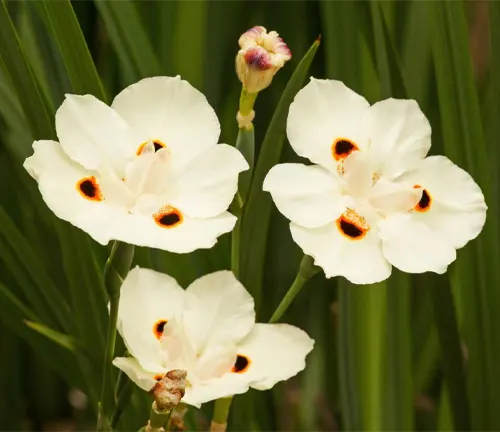
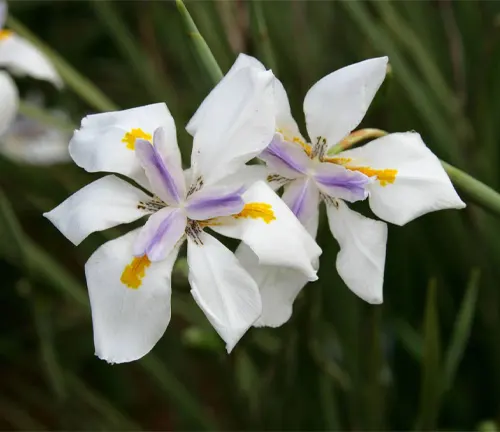
Dietes Grandiflora
Found in Cape Province and KwaZulu-Natal, this species is also naturalized in various regions, including St. Helena, Mauritius, Rodrigues Island in the Indian Ocean, and Western Australia. It is also called the wild iris, large wild iris, or fairy iris.
Dietes Iridioides
Widespread from Ethiopia to Cape Province, this species is also naturalized in Madeira, Mauritius, Réunion, Hawaii, and Jamaica. It goes by various common names such as wild iris, African iris, Cape iris, fortnight lily, and morea iris.

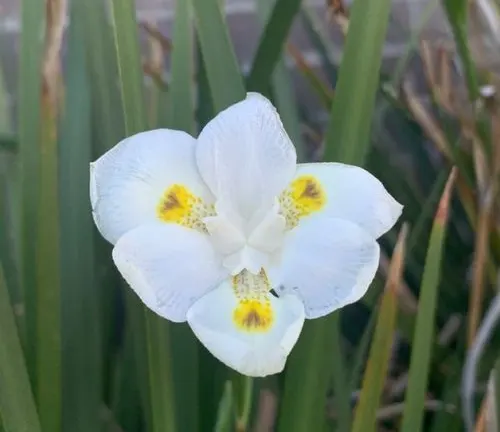
Dietes Robinsoniana
Known as the wedding lily, this species is native to Lord Howe Island, part of New South Wales, Australia.
Dietes Butcheriana
Also known as the Wide-leafed Dietes, is a strap-leafed plant native to South Africa. It features broad, shiny dark green leaves and produces white flowers with touches of yellow and orange. This species thrives in the shade of mist-belt forest areas, making it suitable for shady gardens and landscaping projects.
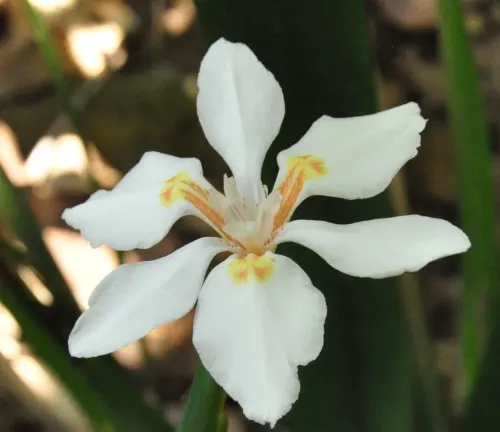
Frequently Asked Questions (FAQs)
1. What is a Fortnight Lily?
The Fortnight Lily, or Dietes iridioides, is a perennial plant native to South Africa. It’s known for its beautiful iris-like flowers and easy care, making it a popular choice for gardens worldwide.
2. How often do Fortnight Lilies bloom?
True to their name, Fortnight Lilies can bloom every two weeks during their growing season, providing a consistent display of flowers in the garden.
3. Are Fortnight Lilies easy to care for?
Yes, Fortnight Lilies are very low-maintenance. They thrive in a variety of soil types, require minimal watering once established, and can tolerate both full sun and partial shade.
4. Can Fortnight Lilies be grown in pots?
Absolutely! Fortnight Lilies adapt well to container gardening, making them a versatile choice for balconies, patios, and other confined spaces.
5. What wildlife is attracted to Fortnight Lilies?
Fortnight Lilies are known to attract pollinators like bees and butterflies, enhancing the biodiversity of your garden.
6. How do you propagate Fortnight Lilies?
They can be easily propagated by dividing the rhizomes or from seeds, allowing gardeners to expand their collection or share with friends.
7. What are the common uses of Fortnight Lilies in landscaping?
They are widely used in mixed borders, woodland gardens, and as ground cover or accent plants in drought-tolerant landscapes.
8. Do Fortnight Lilies have any fragrance?
While not known for a strong scent, Fortnight Lilies may emit a subtle fragrance, especially in the evening, adding a delicate sensory experience to the garden.
9. How can I ensure my Fortnight Lilies thrive?
Ensure they are planted in well-draining soil, receive adequate sunlight, and are watered regularly during their first growing season to establish a strong root system.
10. Are there different species of Fortnight Lilies, and how do they vary?
Yes, besides Dietes iridioides, there are other species like Dietes bicolor (Yellow Wild Iris) and Dietes grandiflora (Large Wild Iris) with differences in flower color and plant size. Each species offers unique beauty and can be selected based on specific landscape needs or aesthetic preferences.



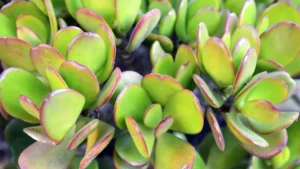
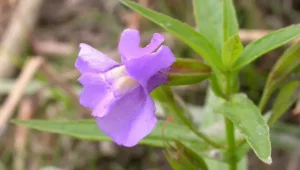



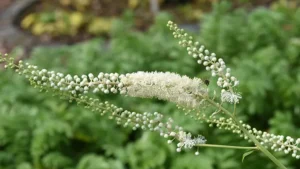

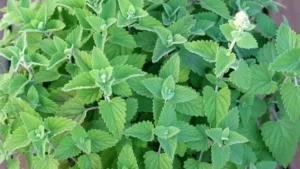


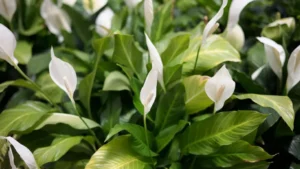
Leave your comment